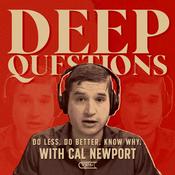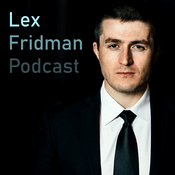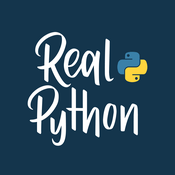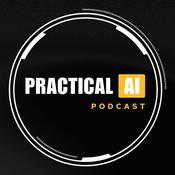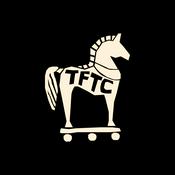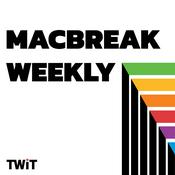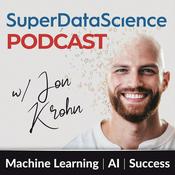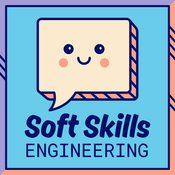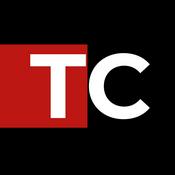Available Episodes
5 of 44
- Episode #44 Merging Lidar & Images: How Easy Is It?Hosted by Michael O'Sullivan, VP Sales at SimActive. With guest speaker Matthew Johson, Product Manager at Teledyne Geospatial.Integrating lidar and imagery can unlock powerful insights for mapping and analysis, but what does it take to get it right? Join Matthew Johnson, Product Manager at Teledyne Geospatial, as he shares practical approaches to merging these datasets seamlessly. Learn how to optimize acquisition strategies, achieve reliable registration, and generate high-quality outputs that maximize the value of data.Specifically listeners will learn the following:• Choosing between simultaneous vs. separate acquisition• Ensuring accurate registration between datasets• Colorizing point clouds and generate orthomosaics• Quantifying the accuracy of results--------32:50
- Episode #43 Photogrammetry for Engineering: How Practical Is It?Hosted by Michael O'Sullivan, VP Sales at SimActive. With guest speaker Kyler Whittenberger, photogrammetry manager at Settimio Consulting Services.Photogrammetry streamlines engineering tasks by enabling precise ground measurements for infrastructure projects like road planning. How effectively is it applied in real-world scenarios? Join our guest Kyler Whittenberger, photogrammetry manager at Settimio Consulting Services, as he shares how photogrammetry, integrated with Correlator3D, supports critical design and planning processes. Discover how their Leica TerrainMapper-2 combines lidar and imagery to achieve high precision, with both data sources complementing each other for superior results.Specifically listeners will learn the following:• Planning effective imagery and lidar data collection• Ensuring project accuracy through data processing• Leveraging lidar’s added value for enhanced precision• Evaluating data reliability for design and planning purposes--------30:17
- Episode #42 Using Drones for 3D Calculations: How Accurate Is It?Hosted by Michael O'Sullivan, VP Sales at SimActive. With guest speaker Stefan Löser, Product Specialist, geo-konzept GmbH.Drone photogrammetry enables generating 3D point clouds to perform volumetric calculations. For example, it is changing the way mining sites operate, making processes faster, safer, and more data-driven. Join our guest Stefan Löser from geo‑konzept as he explores how photogrammetric technologies are helping to improve accuracy, safety, and productivity. Gain insights into how practical workflows can be tailored for 3D measurements.Specifically listeners will learn the following:• Choosing the right drone• Setting up frequent data collections for real-time operational awareness• Generating point clouds for detailed terrain analysis and planning• Performing volume calculations to optimize ground operations--------32:20
- Episode #41 Managing Large Photogrammetry Projects Simultaneously: Can It Be Done?Hosted by Michael O'Sullivan, VP Sales at SimActive. with guest speaker, Pradipta Mahapatra, Founding Member and Delivery Manager at Impulsions LaserCurious how production shops handle several projects at once? Join our guest speaker, Pradipta Mahapatra at Impulsions Laser, as he shares proven strategies for delivering geospatial data to multiple clients efficiently. Learn practical techniques to streamline photogrammetric workflows and ensure quality results.Specifically listeners will learn the following:- Understanding input data- Creating a scalable workflow- Processing large image datasets- Ensuring high-quality outputs--------35:49
- Episode #40 Mapping With Drones: How Quickly Can You Do It?Hosted by David Alamillo, Photogrammetry Specialist at SimActive with guest speakers Mark Bickel, UAV Department Manager at SurvTech Solutions and Marcos Bayuelo, SVP Product & Growth at Wingtra.Explore the power of rapid drone mapping in this podcast session, featuring expert insights from Survtech, Wingtra and SimActive. Discover how to optimize your workflow to produce high-quality map products like elevation models and orthomosaics in record time. This session will offer practical tips for drone operators to enhance efficiency and achieve professional results with ease.Specifically, listeners will learn about the following: • Choosing the right tools for mapping • Planning effective data acquisition• Streamlining processing for fast turnaround • Mastering photogrammetry best practices--------38:40
More Technology podcasts
Trending Technology podcasts
About Pixels and Points
Pixels and Points is an original podcast produced by SimActive. Through the different episodes, discover the world of photogrammetry and mapping from drones, aircrafts and satellites.
To learn more about SimActive, visit our website www.simactive.com and follow us on our social media.
Enjoy the show!
Podcast websiteListen to Pixels and Points, Lenny's Podcast: Product | Career | Growth and many other podcasts from around the world with the radio.net app
Get the free radio.net app
- Stations and podcasts to bookmark
- Stream via Wi-Fi or Bluetooth
- Supports Carplay & Android Auto
- Many other app features
Get the free radio.net app
- Stations and podcasts to bookmark
- Stream via Wi-Fi or Bluetooth
- Supports Carplay & Android Auto
- Many other app features

Pixels and Points
Scan code,
download the app,
start listening.
download the app,
start listening.



